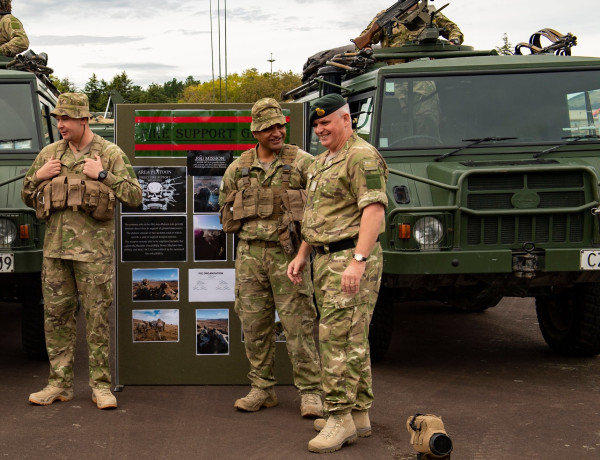The Network Enabled Army (NEA) Programme is moving the New Zealand Army’s planning, intelligence and communications functions to modern, interoperable, digital-based systems. This will increase information sharing capabilities between deployed units and the Army’s command structure.
Commanders will be able to make decisions more quickly, based on detailed real-time information. They will be able to communicate effectively with units on operations, other Government agencies, and/or security partners, in New Zealand, the Pacific or further afield.
The programme was planned to be rolled out through four tranches of funding to 2025-26 and currently, within the NEA Programme, the first two tranches have been approved, providing funding for Defence-led projects to deliver Command, Control, Communications and Computers (C4) and Intelligence, Surveillance and Reconnaissance (ISR) capabilities.
This planned roll out will provide increased capability through each tranche, as well as building incrementally on the capability that is already in place. Managing NEA in successive tranches allows new technologies to be introduced as they mature, ensures that there are ongoing opportunities to evaluate progress and, if necessary, change priorities. It also ensures that the programme progresses at a rate that can be managed effectively and that does not overwhelm the users.
The Programme’s origins lie within several projects that evolved over time. Starting as the ISR Project in 1994, this merged with the Communications Project in 2004 to become Land C4ISR. In 2010 the project combined with three others; Electronic Warfare, Combat Net Radio Replacement and Special Operations to become what is known today as the NEA Programme.
The Programme is providing the technology the Army needs, along with the concepts, training and support to make it work. It prioritises front line soldiers and their commanders, giving them the capabilities they need without burdening them with unnecessary equipment and capability. It allows for expansion and development over time.
The NEA Programme is also managing the project to design, build and install new communications and digital systems in the Bushmaster vehicle fleet.

Government approvals
Government approvals
Tranche One: The first tranche of $106 million in capital funding was approved by Cabinet in April 2015, with operating costs of $36.4 million approved to spend over the next four years, which formed the budget for the NEA C4 project.
Tranche Two: The approval of the Business Case for the second tranche of funding for the NEA Programme was announced in August 2019. The funding of $106.48 million (from New Zealand Defence Force’s accumulated depreciation reserve) is being used to continue capability delivery by the C4 project and has enabled the start of delivery of ISR capability. Additional communications and network enhancements are being delivered, as well as new sensor systems, intelligence gathering, and processing capabilities for the Army, equipping elements such as logistics and medical units that support front line soldiers.
Tranche Two also extends the capability through use of a combination of hardware, software, and wider sources of information (such as partners’ information) that leverage the digital radio networks and information management systems delivered under Tranche One.
August 2023: Cabinet approves funding to design, build and install communications and digital systems for the Bushmaster vehicle fleet.
